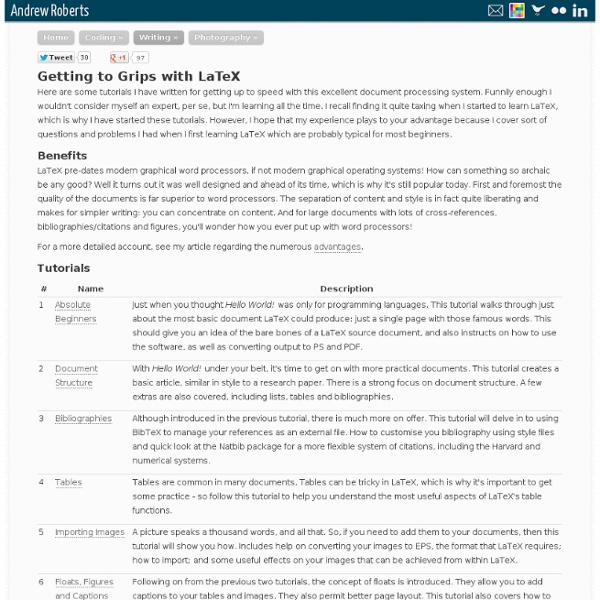



Knotsbag Quick install - TeX Live If you don't want to bother reading the full install documentation and just want to install everything in TeX Live, on a Unix-like system, a minimal recipe follows. Special considerations for Windows are described separately. For MacOSX, we recommend installing MacTeX, which contains all of TeX Live (and a few Mac-specific additions). Cygwin users can follow the instructions for Unix-like systems, but make sure you have the Cygwin prerequisites before beginning the installation. Pre-install: download, cleanup A separate page describes various ways to acquire the software. If you're re-installing after a previous attempt, be sure to completely remove your old installation. rm -rf /usr/local/texlive/2013 rm -rf ~/.texlive2013 Running the installer You do not need to be root (administrator on Windows) to install, use, or manage TeX Live. Once you have the software, run the install-tl script to install (comments are in italics): cd /your/download/directory . Choosing a download host Testing
SWIG: Wrapper and Interface Generator TeX Users Group (TUG) home page How to Report Bugs Effectively There are a number of ways in which non-programmers can contribute to software projects; documentation and testing are among the most frequently-requested services, but testing that results in useless bug reports accomplishes nothing but frustrating the programmer. Today, Simon Tatham shares what it's like to be on the receiving end of bug reports, and offers suggestions for how you can help resolve problems as quickly as possible. Introduction Anybody who has written software for public use will probably have received at least one bad bug report. There's a reason why technical support is seen as a horrible job to be in, and that reason is bad bug reports. In this essay I'll try to state clearly what makes a good bug report. In a nutshell, the aim of a bug report is to enable the programmer to see the program failing in front of him. When you report a bug, you are doing so because you want the bug fixed. "It doesn't work." Give the programmer some credit for basic intelligence. "Show me."
tlmgr user mode | There and back again Starting from tomorrow, tlpretest will contain an extension to the TeX Live Manager called User Mode. This one probably one of the most asked features in recent times, that one can use tlmgr to manage arbitrary texmf trees. Although there are still many things to be improved, the current status already allows users to install many packages, even without write access to the main TeX installation. The TeX Live Manager tlmgr has been since long the main tool for configuration and management of a TeX Live installation. In contrast to the normal installation of TeX Live from TUG, repackaged versions of TeX Live for distributions (Debian, SuSE, Fedora, ...) normally do not ship the tlmgr, as it would interfere with the normal package manager. Well, here it is now. A short walk through how to do things. Initializing the user tree The first thing to be done is initializing the user tree. The first thing to call is tlmgr --init-usertree Installation of packages Now installation is quite easy:
Undoing Changes | Ry's Git Tutorial ‹ Back to Ry’s Git Tutorial In the last module, we learned how to record versions of a project into a Git repository. The whole point of maintaining these “safe” copies is peace of mind: should our project suddenly break, we’ll know that we have easy access to a functional version, and we’ll be able to pinpoint precisely where the problem was introduced. To this end, storing “safe” versions isn’t much help without the ability to restore them. Our next task is to learn how to view the previous states of a project, revert back to them, and reset uncommitted changes. If you’ve been following along from the previous module, you already have everything you need. Display Commit Checksums As a quick review, let’s display our repository’s history. The output for this should look similar to the following, but contain different commit checksums. 1c310d2 Add navigation links 54650a3 Create blue and orange pages b650e4b Create index page View an Old Revision View an Older Revision Tag a Release <!